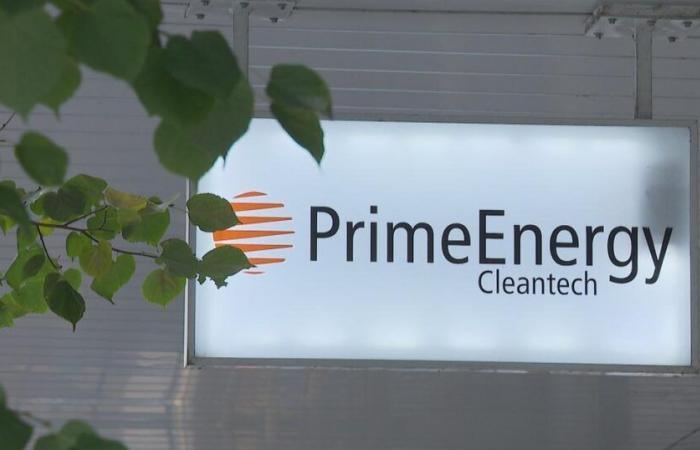
While hundreds of French-speaking savers had been seduced by the investment in photovoltaics promised by the company PrimeEnergy, now bankrupt, Mise au Point reveals that a sixth of their money would have in fact gone into real estate . The company also allegedly continued to sell bonds even though it knew it was in trouble. The show also lifts the veil on the remuneration of Bertrand Piccard, ambassador of the company for almost ten years. An amount of 100,000 francs per year was planned, as well as shares in the company.
Bankruptcy struck like lightning in a seemingly cloudless sky. Since 2011, PrimeEnergy Cleantech (PEC) had all the makings of a “success story”. Its credo: credible, reliable and profitable renewable energies. It sold green bonds to individuals to finance the installation of photovoltaic power plants in Switzerland and Europe.
In total, it raised some 122 million francs from around 2,000 investors, mainly in French-speaking Switzerland, some investing a good part of their retirement in the company, particularly reassured by the presence of Bertrand Piccard in the adventure, and the label awarded by its foundation, Solar Impulse.
But in October, against all expectations, the dividends no longer fell. The company’s management informs its customers of a liquidity crisis. Bankruptcy proceedings are opened, threatening to take away investors’ savings with it.
I have nothing to reproach myself for
Very quickly, one man is singled out: the founder and majority shareholder of PEC, Laurin Fäh. He is accused, notably by Bertrand Piccard, of having emptied the cash register.
Questioned in the program Mise au Point, the Basel businessman today denies any responsibility. “I have nothing to reproach myself for,” he said. “Stupidity is not punishable by law.” What Laurin Fäh calls “stupidity” is in fact a massive loan of 19.5 million francs that he took out from his own company, PEC, with the aim of injecting it into another of his companies Bargella SA . This loan has not yet been repaid.
Buy a suspect
For Maximilien Roche, integrity and investigation consultant, this movement of money towards the owner of the company is far from trivial. “It’s a very, very large amount. And it’s a loan from a company to an individual, who will transmit this money to another company. It’s a fairly indirect chain of transmission of money. And the more intermediaries we create, the more possibilities we create of defaulting on payments and therefore finding ourselves in a situation of bankruptcy,” he says.
Laurin Fäh assures that she invested this money for the good of PEC only. “We invested in a company in Luxembourg, specializing in the construction of new buildings and apartments, to be sold immediately, with very, very good margins,” he explains.
It’s dangerous to put all the money into solar
Some 19.5 million francs out of the 122 million collected from investors would therefore have gone into real estate, contrary to the company’s promises. Before being deactivated, the PEC website assured that the investments would be “entirely dedicated to the development of the solar power plant park”.
Laurin Fäh, however, denies having deceived her creditors. “It’s dangerous to put all the money into solar,” he says, explaining that solar is “more complicated to sell than a building.” Furthermore, real estate allows you to earn more. “The building is worth much more than solar,” he assures.
He added that climate change has negatively influenced the value of photovoltaic production. “Contrary to what we could have imagined, we had more rain and less sun,” he says.
The problems have been there for a while
The economic model in question
If the loan taken out by the owner of PEC triggered the bankruptcy, another question now arises: how long did the management know that the company was in difficulty and to what extent did they dig the hole in continuing to sell shares? While going through the company’s accounting documents, Maximilien Roche notices a detail which could indicate that “the problems have been there for a while”.
“We do not have a balance sheet closed on December 31, 2023. We have one on December 31, 2022 and the next one dates from June 30, 2024,” he notes. Half a year therefore does not appear in the balance sheet accounts.
“What prevented closure? Was it already a liquidity problem?”, asks the expert, who estimates that “if the company was already condemned in 2022 or 2023, but that it still continued not only to operate, but also to raise funds, that’s debatable.”
Bertrand Piccard informed since March
Contacted by RTS, the general director and chairman of the Board of Directors of PrimeEnergy, Khalid Belgmimi, did not wish to answer these questions. As for Bertrand Piccard, the company’s image bearer, what did he know about the coming debacle?
I too am an investor. I learned about the bankruptcy at the same time as you
Since 2015, the explorer has praised, for compensation, the merits of PrimeEnergy. On October 30, during an investor crisis session in Geneva, he also declared that he had been cheated. “We are in a disastrous moment. I too am an investor. I learned of the bankruptcy at the same time as you,” he declared. And added that his sponsorship agreement did not give him access to either the management or administration of the company.
Monday, the Geneva Tribune revealed, however, that he had been informed of the company’s problems already last March. This is when his ambassadorial contract would have ended.
A question remains: how much has he received, since 2015, for his role as image bearer? According to confidential documents that RTS was able to consult, remuneration of 100,000 francs per year was planned. As well as several hundred thousand francs in company shares and bonds. Contacted, he did not wish to react to these amounts, considering that it is a private matter.
Flore Amos/edel





